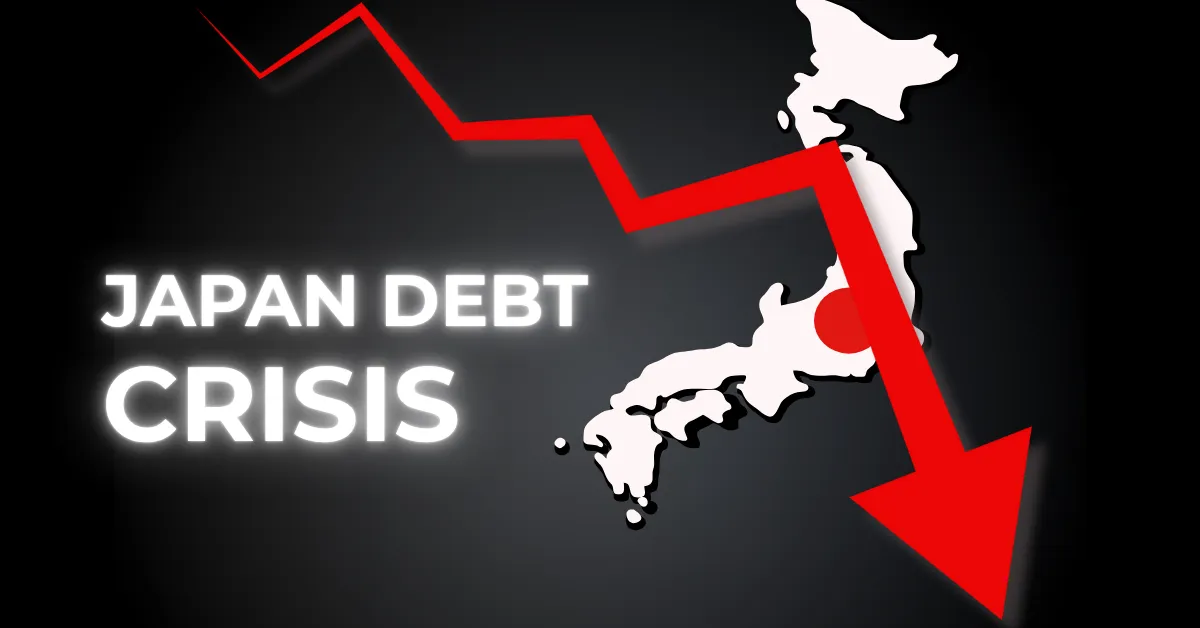
Not a lot of people are talking about this. Japan’s bond market is unraveling fast and it’s not just a local problem. More than half a trillion dollars in value has been wiped out in just weeks, triggering alarm bells across global markets. Bond volatility is now back at levels not seen since the 2008 crisis, and the ripple effects are just beginning to surface.
If you think this is just another macro event, think again. From Tokyo to Wall Street, this collapse is driving a quiet – but growing – shift into Bitcoin. And it’s happening under the radar.
What’s really going on in Japan’s economy? Why are long-dated bonds plunging? And what does all this have to do with crypto? Let’s break it down.
Over the past 45 days, Japan’s 30-year government bond yield has surged by 100bps, hitting a record 3.20%. The 40-year bond, often seen as a long-term safe haven, has dropped over 20% in value, triggering losses of more than $500 billion across the market.
This isn’t normal volatility.
According to analyst Financelot, “Japan’s bond market liquidity has dropped to 2008 Lehman crisis levels. Are we about to experience another financial crisis?”
Let’s talk about the why.
The Bank of Japan is unwinding years of ultra-loose policy. After aggressively buying up government bonds for years, the central bank is now stepping back – and that flood of supply is overwhelming buyers. With the BOJ still holding over $4.1 trillion in bonds – 52% of the entire market – even a small shift in policy is enough to rattle the system.
Japan’s economic numbers aren’t helping. GDP shrank by 0.7% in Q1, more than double the expected drop, while inflation has crept up to 3.6%. Real wages, meanwhile, are down 2.1% year over year.
This mix of slowing growth and rising prices – classic stagflation – is squeezing both investors and policymakers. And it’s hitting Japan’s global strategies hard. The yen carry trade, once a go-to for global liquidity, is under pressure as rising Japanese yields flip the math.
“The huge mess is coming home to roost,” wrote Wolf Street, pointing to the growing cracks in Japan’s once-stable financial structure.
In the background, Japanese institutions are pulling back from U.S. Treasuries too; selling off $119.3 billion in just one quarter. That’s the largest quarterly drop since 2012.
It’s clear traditional markets are struggling. Now, some investors are quietly moving toward crypto, especially Bitcoin. With bonds no longer feeling so “safe,” BTC is starting to look like a viable hedge against global debt risks.
“Is it a coincidence that the UK and Japan are seeing huge demand for bitcoin exposure?” asked analyst James Van Straten, as long-term bond yields in both countries spike.
Bitwise’s Andre Dragosche and Cauê Oliveira, Head of Research at BlockTrendsBR echoed the trend – hinting that institutional capital is starting to see Bitcoin in a new light.
That shift won’t happen overnight. If the yen continues to fall and the dollar strengthens, crypto markets could still feel pressure from a broader carry trade unwind.
But in the long run, the trend is clear: as trust in traditional debt markets wavers, Bitcoin’s role as a hedge is getting harder to ignore.
Japan’s high debt stems from decades of large fiscal deficits, prolonged low economic growth, and significant social security spending for its aging population.
Among developed and advanced economies, Japan consistently has the highest debt-to-GDP ratio. However, countries like Sudan can have a higher overall ratio due to unique crises.
As of 2025, Sudan generally has the highest debt-to-GDP ratio globally (around 252%), followed closely by Japan (around 235%), among others.
El Salvador made history in 2021 as the first nation to adopt Bitcoin as legal…
The Philippines has emerged as one of Southeast Asia’s most progressive nations in embracing digital…
Solana (SOL) saw a massive jump in open interest during July, rising by over 370%,…
Cardano (ADA) is showing signs of weakness as its long/short ratio drops, signaling a surge…
With XRP struggling to hold key support and whales quietly loading up, all eyes are…
Ozak AI is catching serious attention as it pushes deeper into its 4th presale stage.…